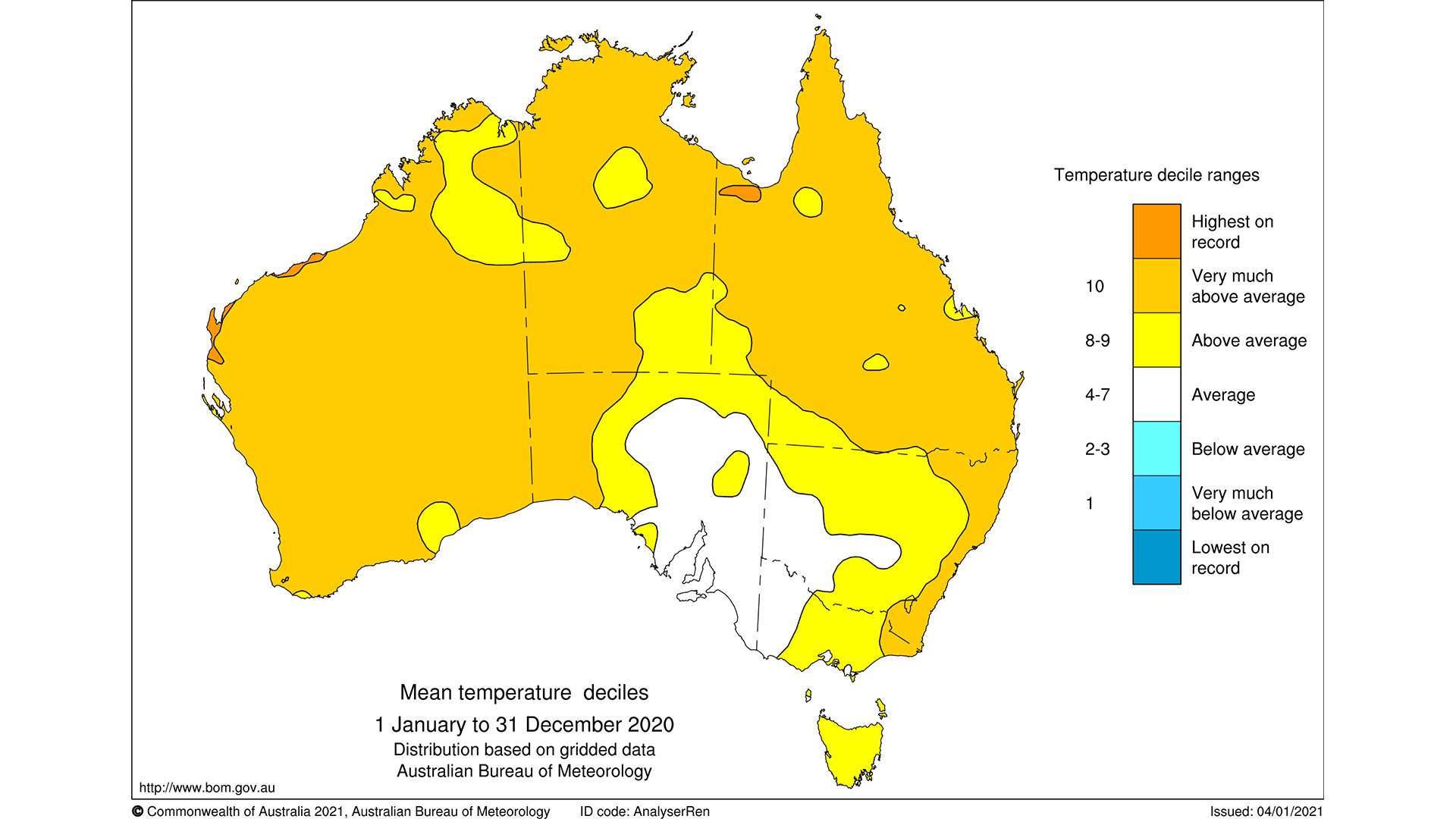Australia Just Sweltered Through Its Hottest Decade and Fourth Warmest Year On Record
November 2020 was also the warmest November on record, while the entirety of spring earned that status as well.
Most of Australia might've spent the bulk of 2020 at home, but that doesn't mean that we didn't notice the temperature. And if you were feeling rather toasty across the 12 months, there's a reason for that — with the Bureau of Meteorology revealing in its just-released Annual Climate Statement 2020 that we just lived through one of country's warmest years since records started being kept.
Only three years on record were hotter than 2020, with the past 12 months ranking fourth. Australia's warmest year on record came the year prior, in 2019, while 2013 ranks second. If you're wondering what that means for temperatures in 2020, the overall averaged mean temperature for the entire country across the year sat 1.15 degree above average.
In all states in 2020, as well as the Northern Territory, both the mean maximum and minimum temperatures were also higher than average. BOM reports that days were especially warm in Sydney, Hobart and Darwin, and nights were toasty in the same three cities, plus Canberra and Brisbane.
Yes, we know that Australia is a sunny place, and has sweltering summers. But that warmth was also spread across the year, with January, February, April, June, August, September and November sitting in the ten warmest on record when it comes to a variety of markers — such as the mean, maximum and minimum temperatures for those months. November 2020 was also the warmest November on record, before summer even hit, while the entirety of spring earned that status as well.

If you noticed that the three of the top four warmest years listed above all fell in the last decade, there's a reason for that as well. "The mean temperature for the ten years from 2011 to 2020 was the highest on record, at 0.94 degrees above average and 0.33 degrees warmer than the previous ten years," said Senior Climatologist Dr Lynette Bettio.
Dr Bettio also notes that increasing temperatures is a worldwide trend. "Globally, every year from 2013 onwards has been among the ten warmest on record, with 2016 and 2019 being the hottest," she says. "2020 was among the top three" on a global scale, she advises, which happened "despite the onset of La Niña, which has a suppressing effect on global temperatures".
In Australia, La Niña usually means more rainfall, cooler daytime temperatures south of the tropics and warmer overnight temperatures in the north. In terms of rain, 2020 was actually close to average, BOM says; however, the western parts of Western Australia, southeastern Queensland and western Tasmania all received below average rainfall.
For more information about the Bureau of Meteorology's Annual Climate Statement 2020, head to BOM's website.





